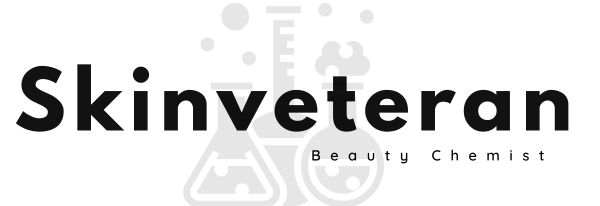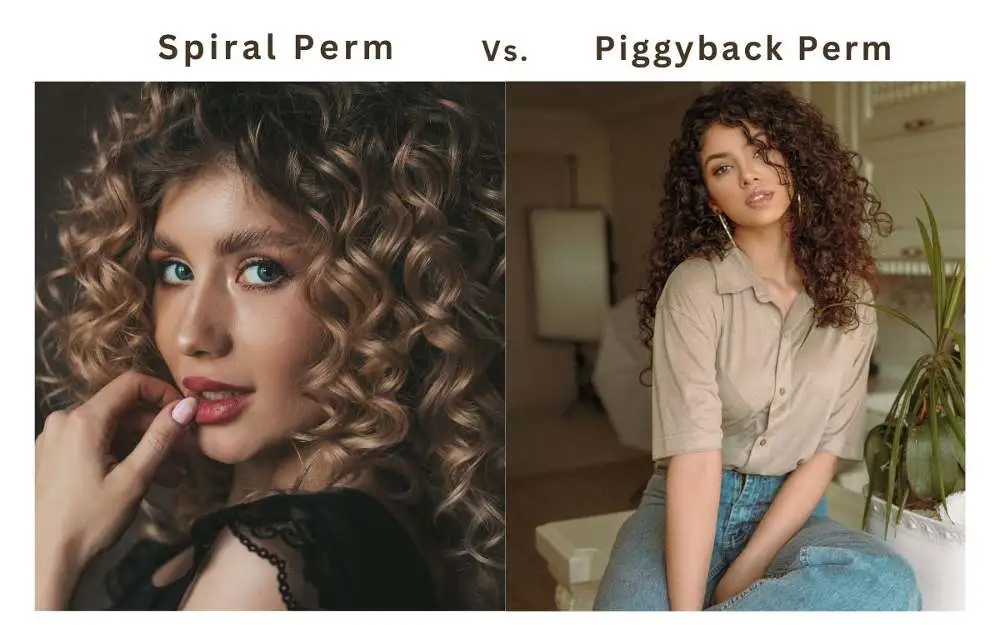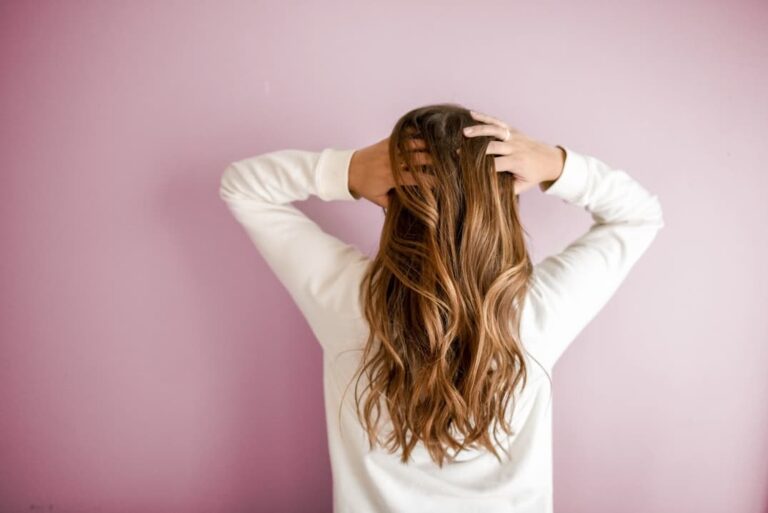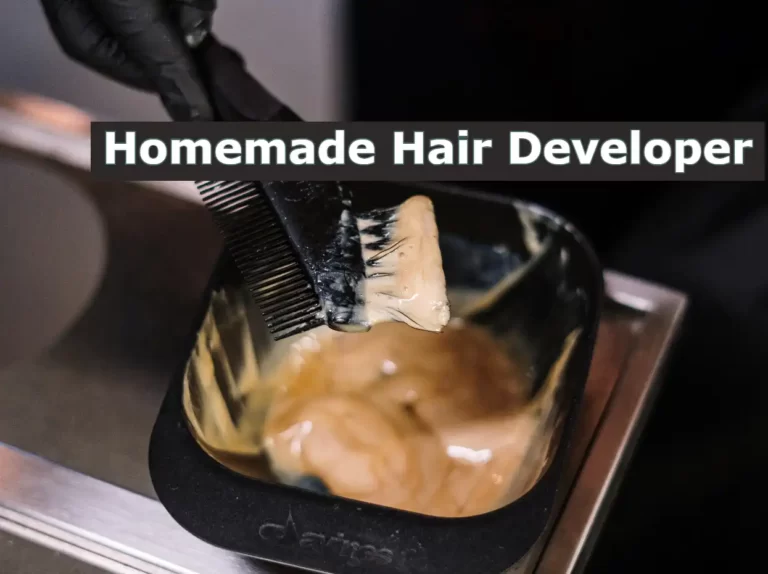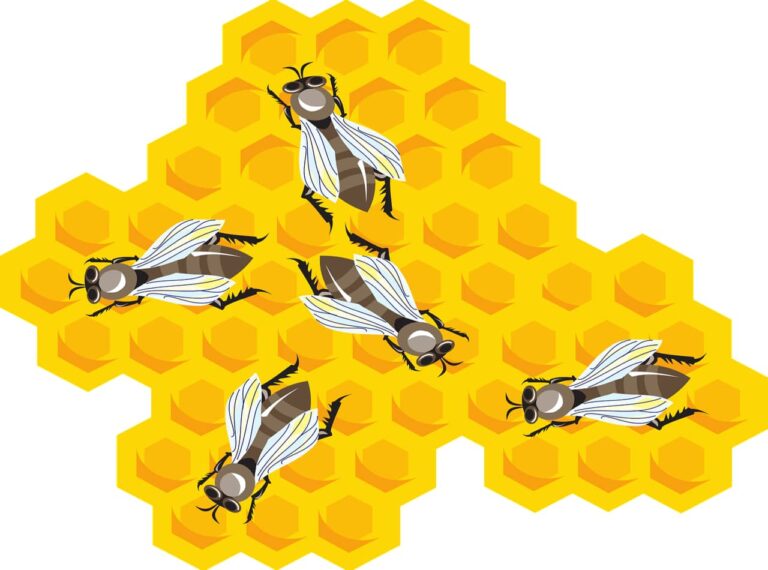Piggyback vs. Spiral Perm: Differences And Final Look
How your hair is wrapped around the perm rods of different sizes typically defines each of the 50 or more hair perms looks. If you are wondering which one between piggyback and spiral perm you should get, there are a few things for you to know.
In short, piggyback perm is famous because it gets you less of a uniform but more of a naturally curly hair look. Spiral perm does the contrary as it pulls off the uniform-looking curls.
But you need more detailed information to decide the best for your mane!
Further down in this post, I’ll explain what goes into getting a piggyback and spiral perm and what type and length of hair are ideal for getting each of these popular perm looks.
So, let’s decide together and say hello to your future curls!
How Piggyback Perm and Spiral Perm Are Different?
There are two points you need to know about hair perms. First, they can differ based on the procedure and chemicals employed, like airwave perm, digital perm, and Olaplex perm.
Second, hair perms mostly differ based on the final look they produce by switching the perm rod sizes or how stylists wrap the hair around them.
Piggyback and spiral perm have the same procedure except for tweaking the hair wrapping pattern and the final look you get from these little variations.
A piggyback perm involves using two different sizes of perm rods to create volume and body at the roots while also producing curls or waves throughout the rest of the hair. A spiral perm typically employs single-size rollers to create defined and uniform curls.
| Features | Piggyback Perm | Spiral Perm |
|---|---|---|
| Curls Pattern | Non-uniform | Uniform |
| Volume and Body | Normal | Voluminous |
| Best for Hair Type | Naturally textured | Straight to textured |
| Final Look | Curls look Natural | Dynamic & Catchy |
| Maintainance | Low | Medium |
| Ideal Hair Length | Medium to long | Short to long |
So, how do you get each of them, piggyback perm vs. spiral perm, and what will your final hair look like?
Interesting! Let’s roll into it!
What’s a Piggyback Perm and How You Get It?
The piggyback hair perm is mainly famous because it creates multi-texture and layered curls that look natural and unique simultaneously. It employs two sets of perm rods, one being smaller in diameter than the other.
The unique name “piggyback” refers to a specific pattern of rolling the perm rods where the larger rod is piggybacked onto a smaller one. You can even use three different sizes of rollers if you have long hair.
A piggyback perm is a good choice if you want to create varying sizes and textures of curls with a less uniform pattern. Typically, it suits people with an already thick and slightly curly mane to enhance their natural look.
So, how can you do a piggyback perm?
1. Decide the Size For Two Sets of Perm Rods
Start with deciding the size of perm rods. Visit a hairstylist to get a better idea about what will be the ideal diameter for two sets of rollers.
Usually, if you have medium-length hair, two different sizes of perm rods from the medium-diameter category will be good.
However, there are still some things to consider before choosing perm rods size, like how much tighter curls you want and the condition of your hair.
You should watch a video or read a detailed guide before deciding which sizes are best for your hair unless you consult the hairstylist.
2. Choose the Right Type Of Perm Kit
The second step for pulling off a fantastic look with a piggyback hair perm will be opting for the right type of perm kit.
Alkaline perm is excellent for setting curls on already thick and textured hair. But it’s a bit harsh. So, choose it only if you have healthy hair.
An acid or thio-free perm is gentle and best suited for creating loose curls.
For a piggyback perm, you should go with an alkaline kit!
3. Wrap Hair in Piggybacked Pattern onto Rods
The last step, and the crucial one, is wrapping your hair around the perm rods correctly. It’s easy when a stylist or a second person is helping you with this step.
- Start with sectioning your hair, 6-9 sections will be fine, or it can vary according to your mane’s volume.
- Start from the front of your head, take a small subsection, pull it up straight, and select the mid-length.
- From the mid-length, curl your hair on the smaller perm rod to the roots and secure it.
- Now, take the section left up from mid-length, wrap perm paper around your hair ends and wrap hair around the larger rod till it reaches the smaller one and gets piggybacked.
- Repeat the action for all of the sectioned hair left. When done, go for a traditional perm procedure.
One of the main benefits of a piggyback perm is that it allows for a more natural, dynamic, and less uniform look than a spiral hair perm.
What’s a Spiral Perm & How You Get It?
A spiral perm gets you tight, springy, and defined curls of a uniform pattern throughout your hair. It goes well with both thick and normal hair textures.
Unlike the piggyback hair perm, spiral perm does not require you to employ perm rods of different diameters. However, you can use them if you want to create a less uniform curl pattern.
The rollers or perm rods are typically placed vertically, with the hair wrapped tightly around them to create a spiral effect.
The smaller the diameter of the rollers, the tighter the curls will be. Typically, you will need more rods for a spiral perm, 100-120, compared to the piggyback perm.
It helps you create tighter and more uniform curls.
Doing a spiral hair perm is nearly similar to the piggyback perm. You have to wrap your hair in a different pattern and use an alkaline or acid perm solution as per your hair strength.
You start by dividing your hair into smaller sections and then wrapping it vertically on the perm rod of a smaller diameter.
A spiral perm can give your hair a more youthful and dynamic look and a great choice for those looking to add volume and body to fine or limp hair.
Wrapping Up
Both procedures use chemicals to break and reform hair’s disulfide bonds into a new conformation, but piggyback perm is more versatile and can be used to create different hairstyles. The spiral perm is employed to get specifically defined curls.
Piggyback perm can enhance the look of your natural curls or textured hair, while spiral perm creates more dramatic and eye-catching curls.
